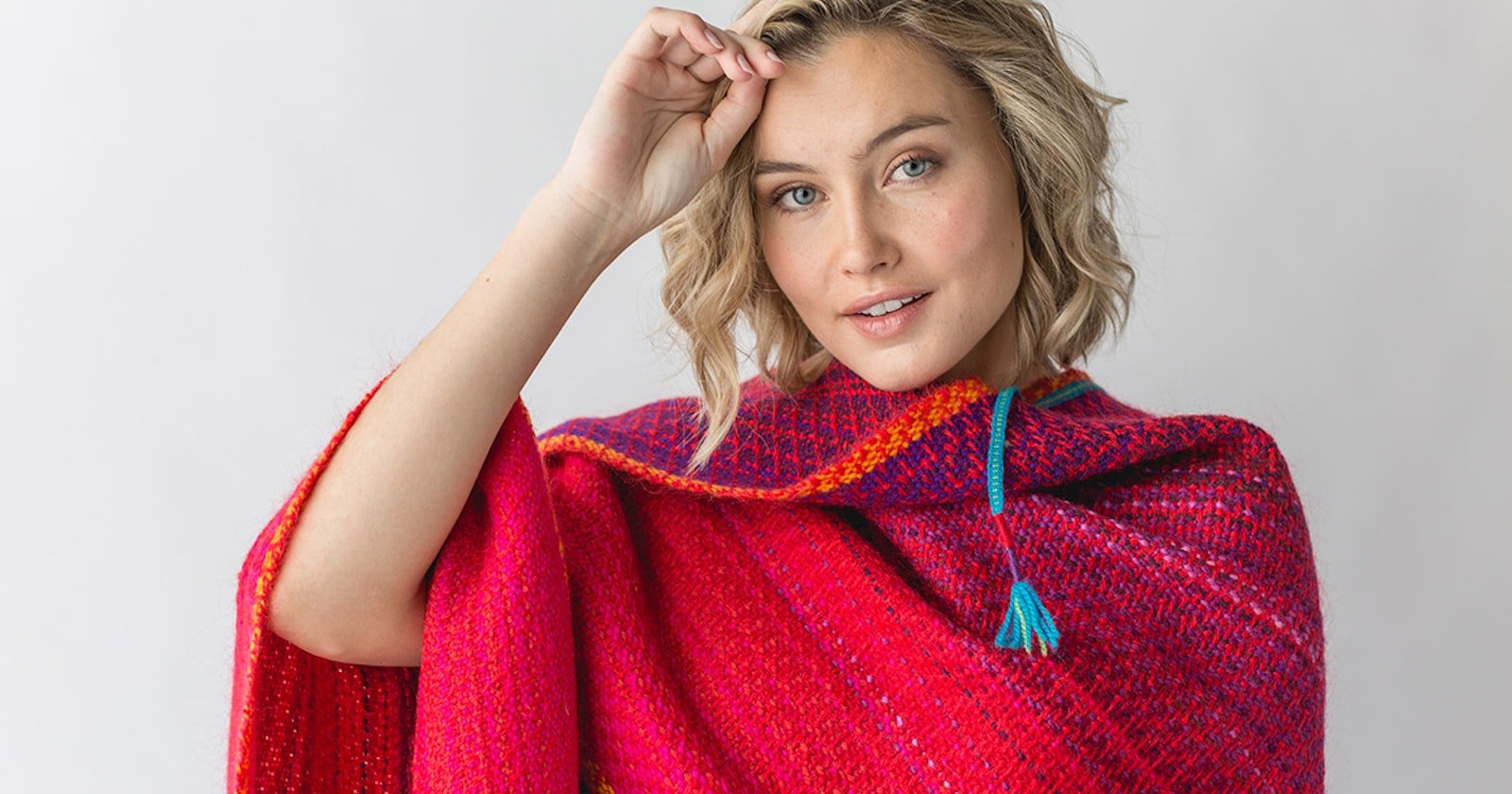Sarah Jackson, a frequent Handwoven contributor and former member of our technical editing team, delights in designing fabric for garments. She joins us today with some expert advice on sewing with your handwoven fabric.
 | |
| Sarah's diversified plainweave tote from the May/June 2012 Handwoven. |
In a clothing class at a recent weaving conference, a woman asked for advice and ideas for using several boxes worth of gorgeous handwoven fabrics. She had been weaving for years but had never been able to muster the courage to cut her beautiful yardage. Three days later, despite the instructor's and students' many suggestions and encouragement, the weaver packed up her boxes and left the class . . . without having made a single snip! Her uncertainty was paralyzing, and, unfortunately, I think she has a lot of company. Sewing with handwoven fabric is a notion that strikes dread into the heart of many weavers.
Fear of the unknown (“What if the edges fray uncontrollably or the cloth just falls apart?”), indecisiveness (“What should I make? How do I choose the right pattern?”), or lack of confidence (“Doesn't handwoven fabric require expert sewing skills? What if it doesn't fit?”), are some of the stumbling blocks that can prevent weavers from discovering the joy of sewing and wearing handwoven clothing. My primary focus in weaving is designing for garments, and I hope, by sharing a few things I've learned along the way, you'll be encouraged to give sewing handwovens a try.
Let's start with fear of the unknown. Handwovens are generally more stable than one might imagine, and there are several ways of handling the fabric. One way is to cut out the paper pattern pieces, pin them to the fabric, use a chalk liner to trace around each piece, remove the pattern, then straight stitch just inside the chalk line and again 1/8" inside that line to stabilize the edges, then cut on the chalk line. Another method is to pin and cut the pattern pieces, zigzag all the raw edges, and press. And yet another way is to trace the pattern outline with chalk (as above), apply a narrow, featherweight fusible on the wrong side of the fabric from just outside the sewing line to the chalk line, then cut the pieces out. Each of these techniques will tame raw edges.
Indecisive? Deciding what you want to make before you start weaving will guide your yarn and weave structure choices and ensure that you have the right amount of fabric. While some weavers weave fabric and later decide how to use it, I prefer to design cloth for a specific garment. I choose a pattern and weave samples to determine shrinkage, to make sure the cloth has the weight and drape I want, and to finalize ideas for color and weave structure. Loom-shaped patterns that require a minimum of cutting and sewing are a good place to start, or choose a commercial pattern with a minimum of seams and shaping.
Unsure about your sewing skills? Starting with a simple pattern is a good way to begin honing your skills for handling handwovens. To familiarize myself with the pattern and check the fit, I always make a test garment out of fabric similar in weight and drape to my handwoven fabric, making any changes as necessary. Being sure of the pattern and fit allows me to proceed with confidence when it's time to cut and sew the "real" thing. And the woven sample gives me the opportunity to experiment and figure out how I want to handle seam finishes, hems, etc. You can also learn basic sewing techniques from books or workshop videos.
Sampling and experimenting are great ways to build confidence. Choose modestly priced yarns and weave a yard or more at least 8" wide. After finishing, cut the sample into several pieces; cut a curved edge on one, another on the bias, etc., and try various ways of managing the raw edges. Before you know it, you'll be a confident, accomplished sewer of handwovens!
––Sarah H. Jackson
Note: If you happen to be a weaver who loves handwoven clothing but seriously dislikes sewing, find a friend who loves to sew. She might be happy to sew for money or trade her skills for some of your beautiful cloth.

